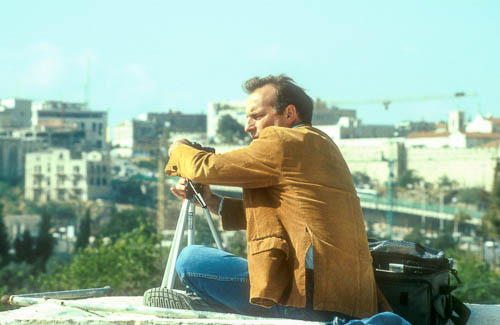“An impressive section of Jerusalem’s fortification wall from the second century BCE has been uncovered on the grounds of the Tower of David complex in the Old City.” About 130 feet of the “First Wall” has been uncovered in the Kishle.
Archaeologists have found evidence for the famous battle at Bet Zecharia described in 1 Maccabees. “It is the first time we have possible archaeological evidence from one of Judah Maccabee’s battlefields.”
A scholar believes that he has cracked Cryptic B, a rare alphabet known only from two uses in the Dead Sea Scrolls.
Coins previously believed to sloppy versions of coins minted by Alexander Jannaeus should instead be understood as coming from the economically weak era of the Hasmonean civil war between 60 and 40 BC.
Hartebeests went extinct in Israel not in the Iron Age but in the Byzantine period.
Doron Spielman spoke about some of his experiences in the City of David at a recent event in Jerusalem.
On Digging for Truth, Scott Stripling explains the archaeology that is related to Hanukkah.
On the Biblical World podcast, Kyle Keimer talks with David deSilva about his two new archaeology books.
Dig has released a 27-minute video about Labayu of Shechem.
The foundation stone of the Pontifical Biblical Institute in Jerusalem was laid 100 years ago.
A powerful winter storm caused death and destruction all over Israel this week.
New release: The Archaeology of the Kingdom of Judah, by Yosef Garfinkel (SBL Press, $75)
You can now purchase soil from the Temple Mount.
Jerusalem University College will be presenting its 6th annual online seminar on January 10. The “Geography and the Bible” seminar is free and will include four sessions:
- “Road Systems from Egypt through Sinai,” by James Hoffmeier
- “Trekking from the Desert to the Land of Milk and Honey,” by Hélène Dallaire
- “What Does it Mean that Jerusalem was ‘Built as a City which is Compact Together?’ A Geographical and Archaeological Reading of Psalm 122:3,” by Chandler Collins
- “The Early Church’s Encounter with the Roman Imperial Cult,” by Carl Rasmussen
There is no hat tip (HT) below to Gordon Franz, because Gordon died on November 22. I met Gordon when studying at IHLS in the early 90s, and we stayed in touch over the years, including a tour he gave my family of NYC. Gordon taught for various schools over the years, including the Israel and Turkey/Greece/Rome programs for the Talbot School of Theology. Most recently Gordon sent me stories for these roundups, and in the last email he wrote me, he said he was on his way to buy Rabbi Landy’s latest book. He was quite the book connoisseur. And he had much yet he planned to accomplish. Some of Gordon’s writings are still available on his website. A recording of his celebration of life service is online. He will be missed.

HT: Agade, Ted Weis, Keith Keyser, Arne Halbakken, Alexander Schick, Explorator